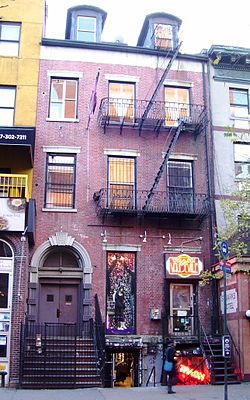
Jeffrey Ross Hyman, known professionally as Joey Ramone, was an American singer, best known as the lead vocalist and a founding member of the punk rock band Ramones. His image, voice, and his tenure with the Ramones made him a countercultural icon. He, along with the guitarist Johnny Ramone, are the only two original members who stayed in the band until the disbandment in 1996.

New York Dolls were an American rock band formed in New York City in 1971. Along with the Velvet Underground and the Stooges, they were one of the first bands of the early punk rock scenes. Although the band never achieved much commercial success and their original line-up fell apart quickly, the band's first two albums—New York Dolls (1973) and Too Much Too Soon (1974)—became among the most popular cult records in rock. The line-up at this time consisted of vocalist David Johansen, guitarist Johnny Thunders, bassist Arthur Kane, guitarist and pianist Sylvain Sylvain, and drummer Jerry Nolan; the latter two had replaced Rick Rivets and Billy Murcia, respectively, in 1972. On stage, they donned an androgynous wardrobe, wearing high heels, eccentric hats, satin, makeup, spandex, and dresses. Nolan described the group in 1974 as "the Dead End Kids of today".

CBGB was a New York City music club opened in 1973 by Hilly Kristal in the East Village in Manhattan, New York City. The club was previously a biker bar and before that was a dive bar. The letters CBGB were for Country, Bluegrass, Blues, Kristal's original vision for the club. But CBGB soon emerged as a famed and iconic venue for punk rock and new wave bands, including the Ramones, Dead Boys, Television, Patti Smith Group, Blondie, Madonna and Talking Heads.
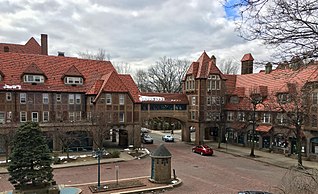
Forest Hills is a mostly residential neighborhood in the central portion of the borough of Queens in New York City. It is adjacent to Corona to the north, Rego Park and Glendale to the west, Forest Park to the south, Kew Gardens to the southeast, and Flushing Meadows–Corona Park to the east.

Clement Burke is an American musician who is best known as the drummer for the band Blondie from 1975, shortly after the band formed, throughout the band's entire career. He also played drums for the Ramones for a brief time in 1987, under the name Elvis Ramone.

The Bowery is a street and neighborhood in Lower Manhattan in New York City, United States. The street runs from Chatham Square at Park Row, Worth Street, and Mott Street in the south to Cooper Square at 4th Street in the north. The eponymous neighborhood runs roughly from the Bowery east to Allen Street and First Avenue, and from Canal Street north to Cooper Square/East Fourth Street. The neighborhood roughly overlaps with Little Australia. To the south is Chinatown, to the east are the Lower East Side and the East Village, and to the west are Little Italy and NoHo. It has historically been considered a part of the Lower East Side of Manhattan.

8th Street is a street in the New York City borough of Manhattan that runs from Sixth Avenue to Third Avenue, and also from Avenue B to Avenue D; its addresses switch from West to East as it crosses Fifth Avenue. Between Third Avenue and Avenue A, it is named St. Mark's Place, after the nearby St. Mark's Church in-the-Bowery on 10th Street at Second Avenue.

Subterranean Jungle is the seventh studio album by the American punk rock band Ramones, released by Sire Records on February 23, 1983. Overall, the album featured a return to a somewhat more hard punk rock style compared to the band's previous two albums End of the Century in 1980, and Pleasant Dreams in 1981, which were the most pop-focused of the band's career. This direction was encouraged by guitarist Johnny Ramone. The recording sessions saw disputes between band members, mainly due to struggles with alcohol addiction by Joey Ramone and Marky Ramone, and the drug addiction of Dee Dee Ramone.
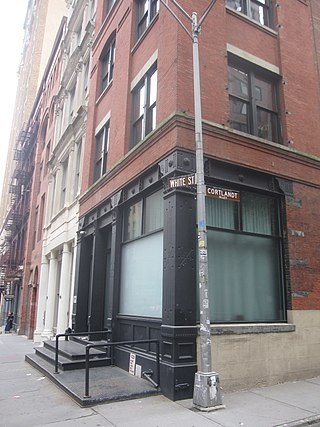
The Mudd Club was a nightclub located at 77 White Street in the TriBeCa neighborhood of Lower Manhattan in New York City. It operated from 1978 to 1983 as a venue for post punk underground music and no wave counterculture events. It was opened by Steve Maas, Diego Cortez and Anya Phillips.
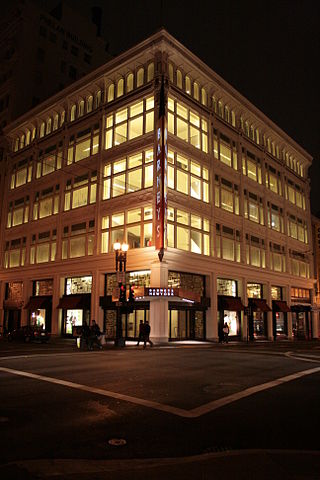
Barneys New York is an American department store chain founded in 1923 by Barney Pressman. The company operated full-line department stores in the United States from 1923 until 2020. Authentic Brands Group acquired Barneys' intellectual property in 2019, and has licensed the brand to Saks Fifth Avenue for specialty departments within its flagship stores since 2021.

We Have Come for Your Children is the second and final studio album by the American punk rock band Dead Boys. It was recorded and released in 1978, on Sire Records. The recording of the album was problematic for the group and sessions were halted when the band became convinced that producer Felix Pappalardi did not understand their music. The band subsequently tried but were unable to get James Williamson of the Stooges to salvage the sessions; they broke up a short time later.

Papaya King was a fast food restaurant in New York City. Its original location was on the Upper East Side of Manhattan. It had made several attempts to expand to other locations which have since closed.

The Palladium was a movie theatre, concert hall, and finally nightclub in New York City. It was located on the south side of East 14th Street, between Irving Place and Third Avenue.
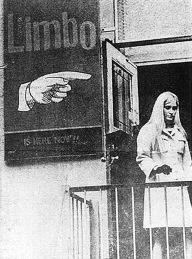
Limbo was a boutique which was opened in 1965 by Martin (Marty) Freedman, originally at 24 St. Mark's Place between Second and Third Avenues in the East Village neighborhood of Manhattan, New York City. The shop moved to 4 St. Mark's Place on the same block in 1967, and closed in 1975.

The Ramones were an American punk rock band formed in the New York City neighborhood Forest Hills, Queens in 1974. Known for helping establish the punk movement in the United States and elsewhere, the Ramones are often cited as the first true punk band. Though initially achieving little commercial success, the band is seen today as highly influential in punk culture.

The Hamilton-Holly House is a Federal style townhouse at 4 St. Mark's Place in the East Village neighborhood of Manhattan in New York City. Constructed in 1831, it was the home of Eliza Hamilton, the widow of Alexander Hamilton, from 1833 to 1842. The Trash and Vaudeville fashion store was located there for over forty years ending in 2016.
A & R Recording Inc. was a major American independent studio recording company founded in 1958 by Jack Arnold and Phil Ramone.
Leslie Herson was an American businesswoman and artist. She is known for creating the cult vintage store Love Saves The Day or LSD, which operated in New York City's East Village from 1966 until 2009. She is credited for being one of the first to recognize the value of Kitsch items before flea markets became popular.
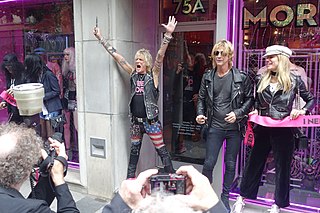
James Kenneth Webb was a punk fashion stylist and the long-time manager of New York City's Trash and Vaudeville. Webb worked at Trash and Vaudeville from 1999 until the store moved off of St. Marks Place in 2016. As a stylist, Webb helped to dress artists and musicians such as the Ramones, Beyoncé, Lady Gaga, Joan Jett, Sebastian Bach and many others. On October 13, 2017, Webb opened his own rock boutique in New York City called "I Need More", named after a song by Iggy Pop, at 75A Orchard Street. The grand opening was attended by Slash and Duff from Guns N' Roses.
